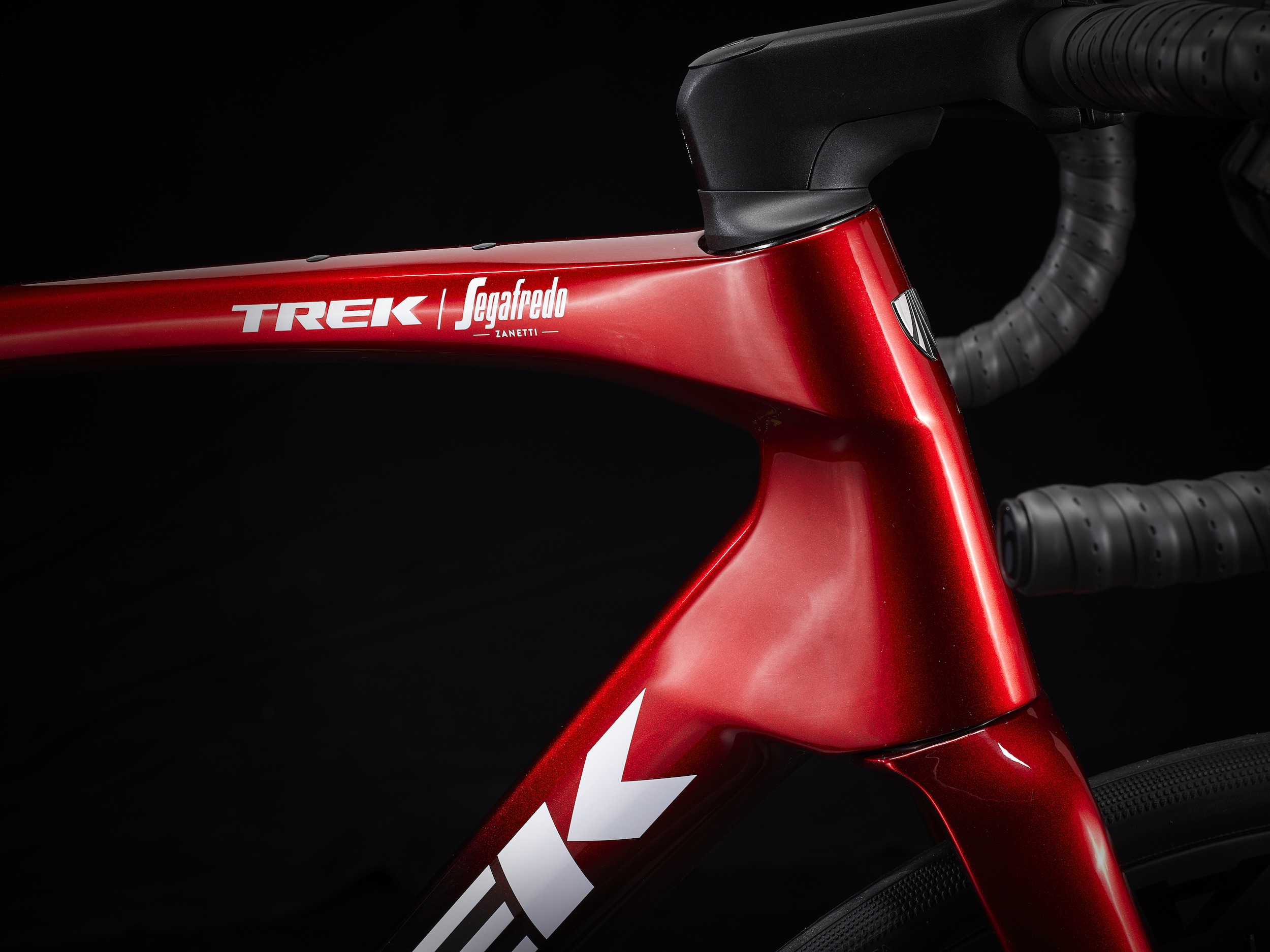The fourth-generation Trek Domane arrives along with claims that it’s faster than ever.
If you cut a pound and a half off a road bike frame, you’ve done some significant work. That’s what Trek performed with the new iteration of the Domane, its all-around road bike that cyclists have long known for a comfy ride.

The new Domane SLR weighs up to 700 g less than its predecessor, the brand said, and the base model SL weighs 300 g less.
The bike also comes with the distinction that it’s the 2022 Paris-Roubaix Femmes winner. Elisa Longo Borghini rode a race-optimized Domane RLS to victory in the July race, letting the cat out of the bag on its existence in the process.

Trek Domane Updates and Details
To accomplish the weight savings, Trek both modified and removed IsoSpeed suspension components that helped keep previous Domane iterations compliant. The Domane now has no front suspension, and a simplified seat tube decoupler that’s no longer adjustable.

New tube shaping and an integrated cockpit result in aero savings, Trek said, both of which increase the performance tilt. But Trek also sought to maintain the line’s reputation for all-day comfort.
“It feels like a performance road bike,” said Jordan Roessingh, director of road bikes at Trek, in a webinar for the launch, “and you still maintain all the benefits of the previous versions.”
How? Trek did make the new rear IsoSpeed system (decoupler) nonadjustable, but it also moved it on top of the top tube, rather than below it.

That positioning, it says, means more compliance period. And the SLR’s decoupler, Trek says, mirrors the most comfortable setting in the previously adjustable builds.
The frame also maintains the line’s tolerance for 38mm tires to help iron out bumps. Finally, Trek’s H2 geometry focuses around a high-top tube and slightly long wheelbase to help stability.

But clipping a few components and bringing the cables inside the cockpit wasn’t going to deliver the top-speed boost Trek wanted. To drive home the effect, it chose Kammtail Virtual Foil (KVF) tube shaping, and a D-shaped seatpost, which it claims makes the whole line more slippery.
Internal downtube storage helps the frame stay even cleaner. Finally, it opted for higher-spec carbon on the SLR, upgrading to 8000 OCLV.

The RSL exhibits one substantial difference from both subordinate Domane models: Trek’s much more aggressive H1.5 racing fit, used on both the Madone and the Emonda.
The upshot is a substantially lower front end than the SL and SLR: comparing the geometry charts (see below) shows that a 54cm RSL has a stack height of 52.7 cm as opposed to the SL and SLR’s 57.5 cm. The RSL also cuts tire clearance to 35mm.

Not purely a race bike, the Domane builds in features for weekend warriors or bike tourists like bosses for top tube bags and hidden mudguard mounts, plus the internal frame storage.
The line starts at $4,700 MSRP for the lowest-spec SL 6, and $13,200 for the top-end SLR 9 eTap. A Domane RSL frameset (the only way it’s sold) runs $4,200.










